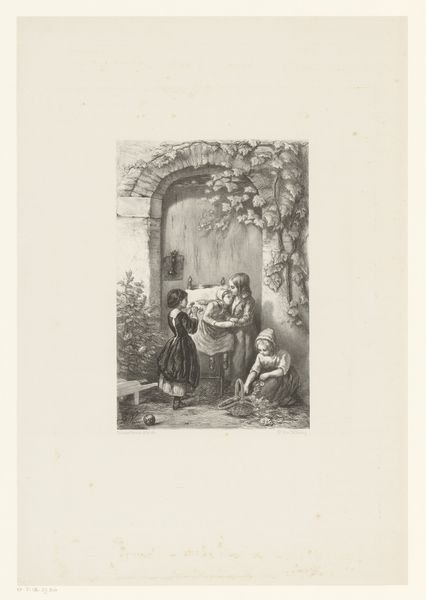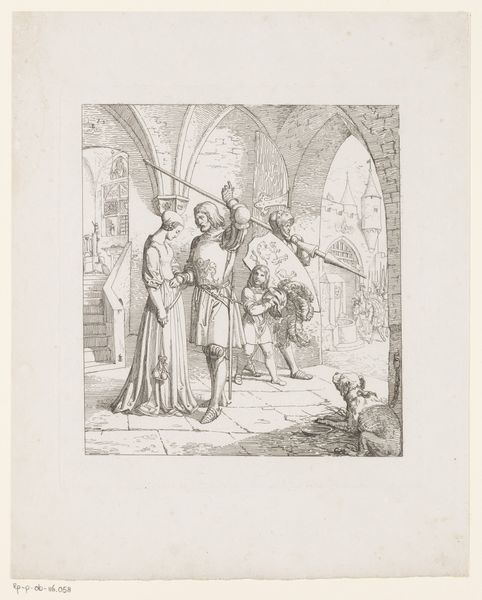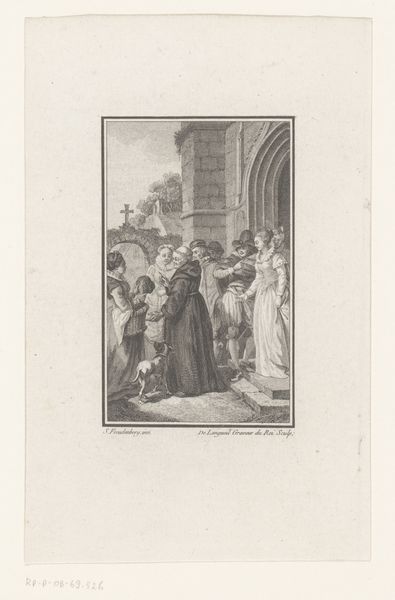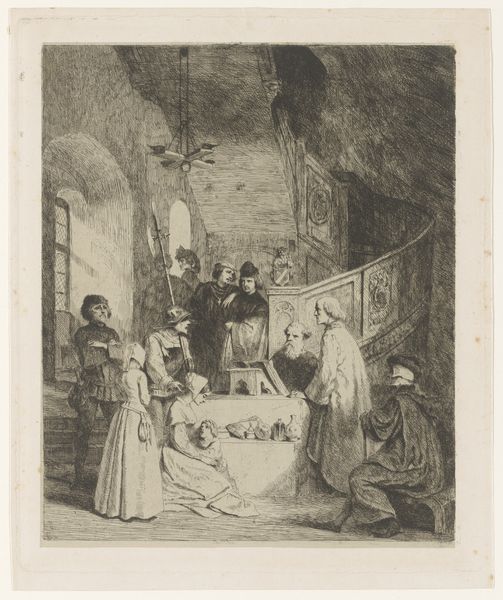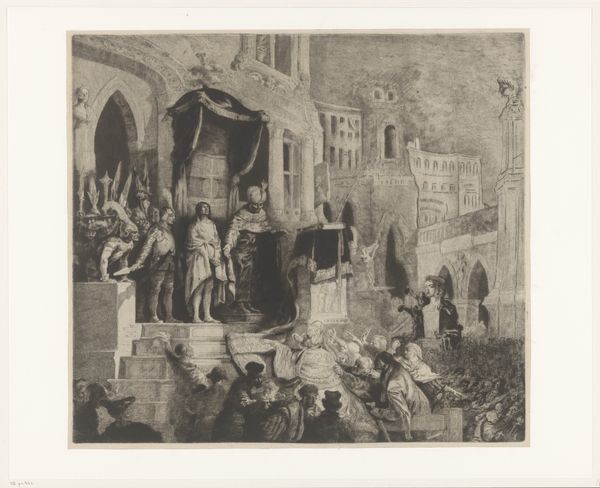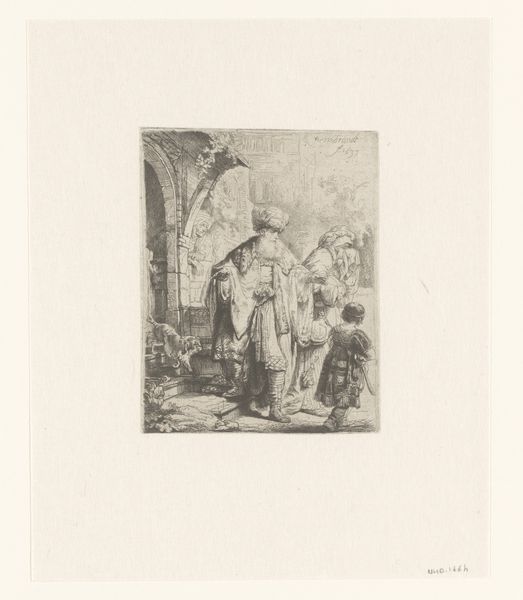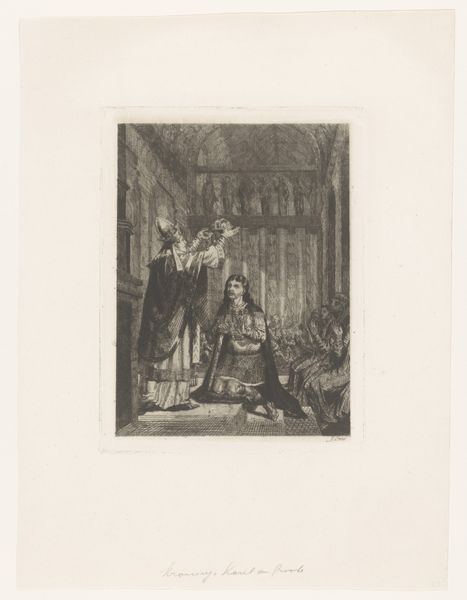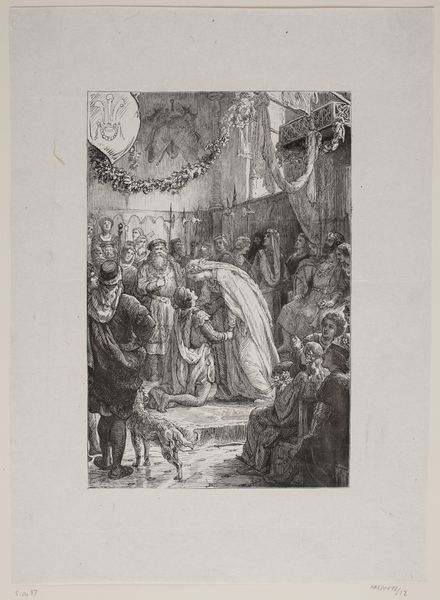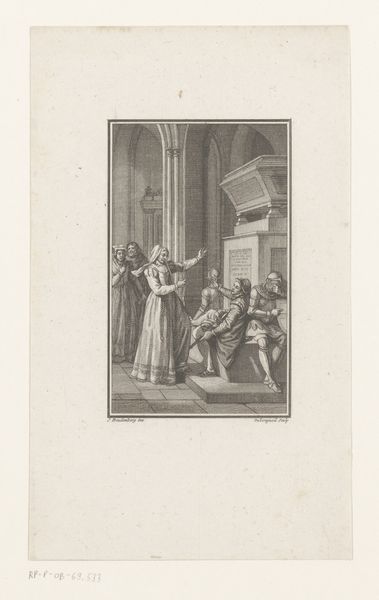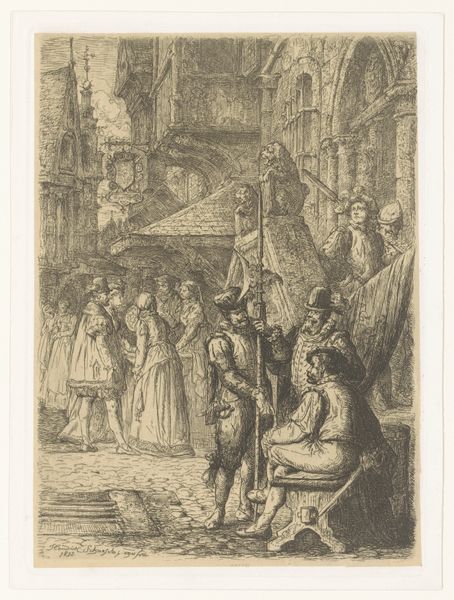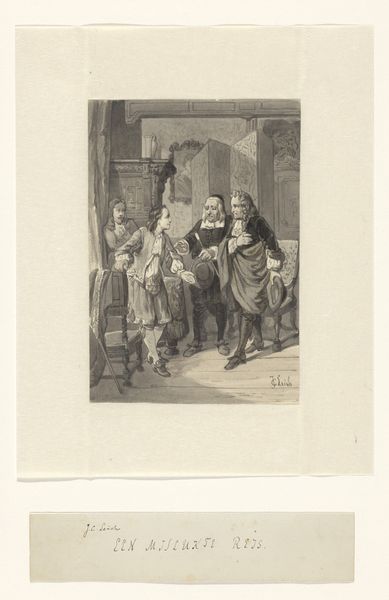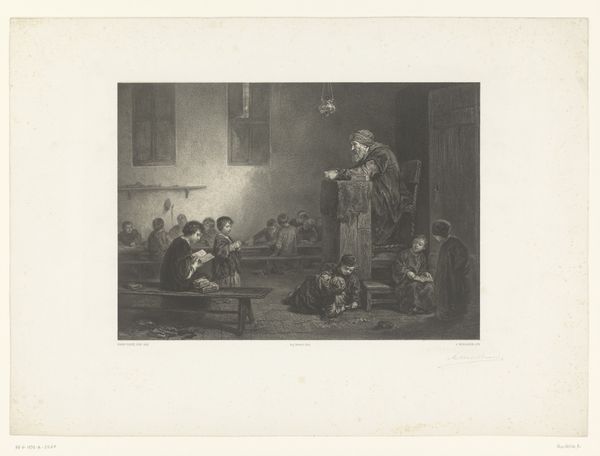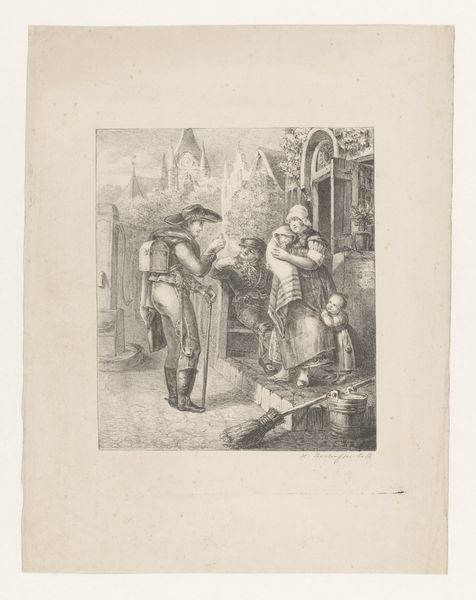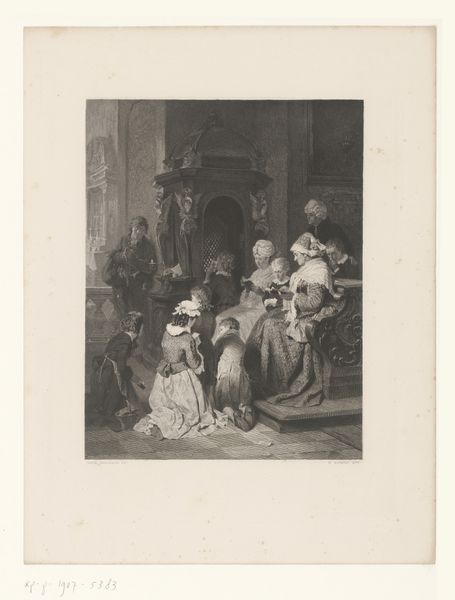
Bernard Délicieux bevrijdt gevangenen uit de kerkers van de inquisitie in Carcassonne 1879
0:00
0:00
Dimensions: height 325 mm, width 250 mm
Copyright: Rijks Museum: Open Domain
Curator: Here we have Léopold Flameng's 1879 engraving, "Bernard Délicieux bevrijdt gevangenen uit de kerkers van de inquisitie in Carcassonne," or "Bernard Délicieux Freeing Prisoners from the Inquisitorial dungeons in Carcassonne". It is an etching printed on paper, characteristic of his printmaking oeuvre. Editor: Immediately striking! It feels like a scene plucked from a particularly grim fairytale. The composition, all blacks and whites, amplifies that dramatic tension, doesn't it? So theatrical. Curator: Flameng made this during a time when history painting and depictions of historical narratives were exceedingly popular and collected. This work portrays a scene from medieval history, depicting Bernard Délicieux, a Franciscan friar. Editor: Seeing those prisoners emerging, shirtless and gaunt, really drives home the suffering inflicted by the Inquisition. This wasn’t just abstract doctrine; there were bodies in cells, and they must have experienced unimaginable horrors. It is almost reminiscent of Jacques Callot, capturing historical and religious context that highlights both piety and inhumanity. Curator: Precisely! Bernard Délicieux was a vocal opponent of the Inquisition and advocate for the rights of the people of Languedoc. Flameng, through this highly detailed print, creates a public image for the republican figure Bernard Délicieux. Print media, remember, democratized images. Editor: And the architecture looms so heavily – those bars, the stones, it's the embodiment of institutional power crushing the individual. Who decides who’s inside those cells? Who holds the key? It all begs the question: How do we grapple with systems of oppression? And how can figures like Délicieux inform present-day strategies of resistance? Curator: That’s an important thread to pick up here. The artist highlights Bernard Délicieux's stance against institutional abuses. Works like this had a clear political role, promoting civic virtues in a republic context, advocating resistance against oppressive structures through his figure of Délicieux. Editor: A complex historical subject is visually translated into a narrative of hope, even with those shades of despair around the prisoners and their long history of violence. Flameng's romantic depiction humanizes historical struggles while calling on each viewer to question authority and advocate justice in our own world. Curator: And through this careful rendering, we gain a clearer understanding not just of history, but of art's enduring role in shaping public memory and promoting critical reflection about governance and social action.
Comments
No comments
Be the first to comment and join the conversation on the ultimate creative platform.
